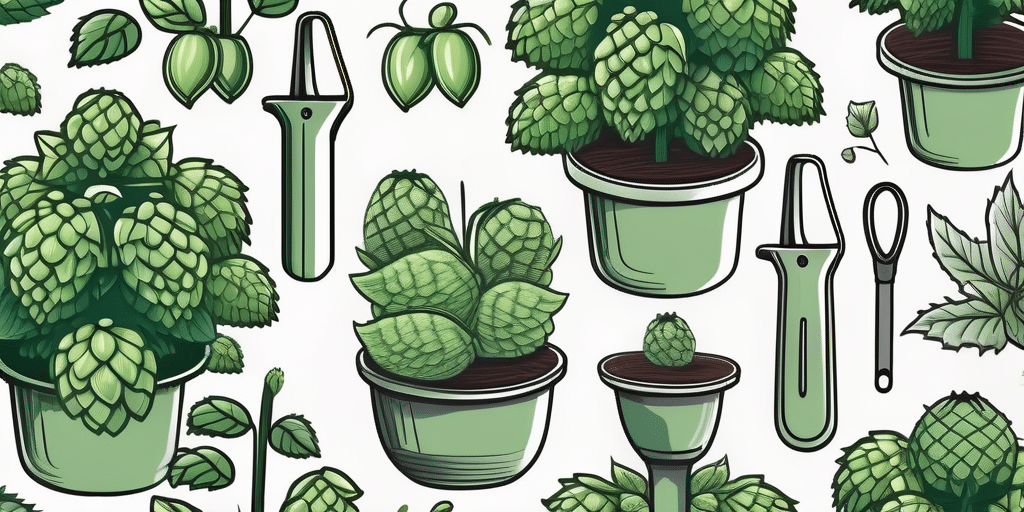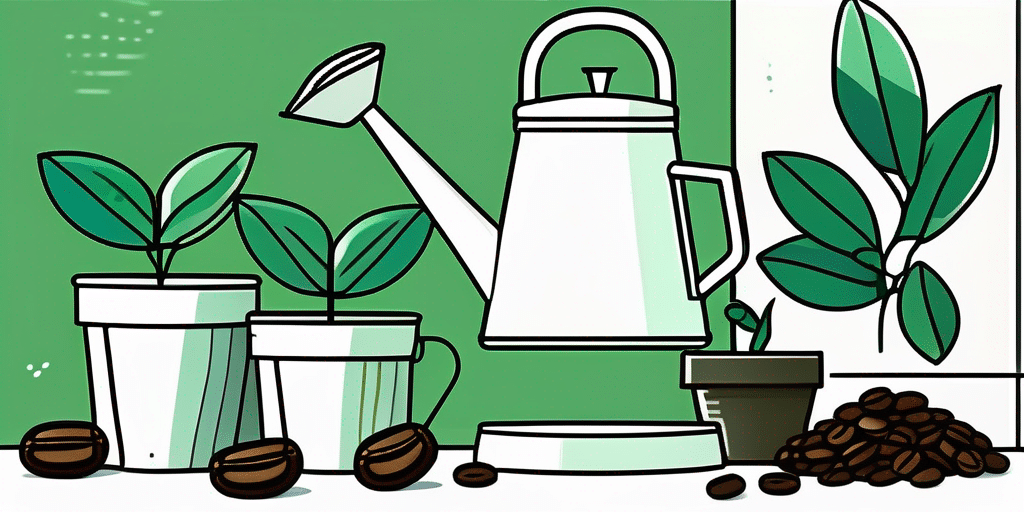Vanilla is not just a flavoring agent, but also a fascinating plant with a rich history and a complex life cycle. In this complete guide, we will explore everything you need to know about the vanilla tree – from its origin and cultivation to its role in the economy. So, let’s dive in and uncover the captivating world of the vanilla tree!
Understanding the Vanilla Tree
Origin and History of the Vanilla Tree
The vanilla tree, scientifically known as Vanilla planifolia, traces its roots back to the rainforests of Mesoamerica. The ancient Mayans were the first to cultivate and use vanilla, valuing its unique aroma and flavor. Later, the Aztecs discovered its aphrodisiac properties and used it in their chocolate drinks.
With the European colonization of the Americas, vanilla eventually made its way to other parts of the world. It was the Spanish conquistador, Hernán Cortés, who introduced vanilla to Europe in the early 16th century. From there, it spread to other tropical regions, such as Madagascar, Réunion, and Tahiti.
Vanilla cultivation is a labor-intensive process. The vanilla tree is a type of orchid that requires hand-pollination because its natural pollinator, the Melipona bee, is not found outside of Mesoamerica. Farmers must carefully hand-pollinate each flower, a delicate and time-consuming task that contributes to the high cost of vanilla.
Species of Vanilla Trees
While Vanilla planifolia is the most widely cultivated and commercially important species, there are other varieties of vanilla trees. These include Vanilla tahitensis, known for its fruity and floral aroma, and Vanilla pompona, which produces a vanilla with a strong woody scent.
Another lesser-known species is Vanilla mexicana, native to Mexico and Central America. This species is valued for its unique spicy and smoky notes, which set it apart from the more common Vanilla planifolia. Despite its distinct flavor profile, Vanilla mexicana is not as widely cultivated due to its lower yield and more challenging growing conditions.
The Life Cycle of a Vanilla Tree
Growth and Development Stages
The life cycle of a vanilla tree is a captivating journey that commences with a minuscule seed. From the moment the seed germinates, the tree embarks on a lengthy growth process, showcasing the wonders of nature. It starts as a humble vine, seeking out trees or poles for structural support. As it matures, it develops a sturdy stem and an abundance of luscious, glossy leaves that glisten in the sunlight.
During the initial three to five years of its life, the vanilla tree dedicates its energy to vegetative growth, establishing a robust root system and laying the foundation for its future endeavors. It is only after this patient period of nurturing that the tree finally reaches maturity and begins its journey towards flowering.
As the vanilla tree transitions into its next phase, it graces the world with delicate and aromatic flowers, typically blooming from December to January. These exquisite flowers, however, have a fleeting existence, lasting for less than a day. Due to this ephemeral nature, hand-pollination becomes a critical step in the cultivation of vanilla.
Flowering and Pollination Process
To ensure successful pollination, skilled farmers delicately transfer pollen from the flower’s male reproductive organ (stamen) to the awaiting female reproductive organ (pistil). This intricate process demands precision and expertise, as the art of pollination plays a pivotal role in determining the quality and quantity of the ensuing fruit. A harmonious dance between nature and human intervention, pollination is a testament to the delicate balance required for the vanilla tree to thrive and produce its sought-after fruit.
Cultivating Vanilla Trees
Ideal Conditions for Growth
Vanilla trees thrive in warm, humid climates with abundant rainfall. They require a minimum temperature of 20°C (68°F) and a maximum temperature of 35°C (95°F) to flourish. They prefer filtered light, so partial shade is ideal.
When it comes to water, vanilla trees have specific needs. While they do require consistent moisture, they are also sensitive to overwatering. It is crucial to strike a balance and ensure that the soil is moist but not waterlogged to prevent root rot.
Additionally, the soil should be well-drained and rich in organic matter. Vanilla trees benefit from regular fertilization with a balanced mix of nutrients, including nitrogen, phosphorus, and potassium.
Common Challenges and Solutions
Like any crop, vanilla trees face various challenges during cultivation. One common issue is pests, including mites, thrips, and fungus gnats. Farmers combat these pests through integrated pest management strategies, which involve monitoring, cultural practices, and biological controls.
Another challenge that vanilla tree farmers encounter is the threat of climatic conditions such as cyclones or droughts. These extreme weather events can impact the growth and yield of vanilla beans. Implementing protective measures like windbreaks or irrigation systems can help mitigate these risks.
Furthermore, diseases such as root rot and Fusarium wilt can pose a threat to the vanilla tree’s health. Implementing proper sanitation practices, crop rotation, and the use of disease-resistant varieties can help mitigate these risks.
Harvesting and Processing Vanilla
When and How to Harvest
A keen eye and experience are vital when determining the right time to harvest vanilla beans. Typically, the beans are plucked when they are green, just before they fully ripen. This stage is crucial as it ensures optimal flavor and aroma development.
Harvesting vanilla involves careful hand-picking and then blanching the beans in boiling water. Afterward, the beans undergo a meticulous process of sweating, drying, and conditioning to develop their distinctive aroma and flavor.
Vanilla plants belong to the orchid family, and their delicate flowers only bloom for a few hours, requiring precise timing for pollination. In regions where natural pollinators are scarce, hand pollination is often carried out by skilled workers to ensure a successful yield of vanilla beans.
After the beans are harvested, they are sorted based on size and quality. The beans are then subjected to a process called “killing,” where they are briefly immersed in hot water and then exposed to the sun during the day and wrapped in blankets at night. This cycle of sweating and drying can last for several weeks, during which the beans undergo enzymatic reactions that develop their signature aroma.
From Bean to Extract: The Processing Journey
Once the vanilla beans are properly cured, they can be transformed into various forms, such as vanilla extract, vanilla paste, or vanilla powder. The process involves grinding the beans and extracting their essence, which is then further refined and standardized.
The resulting product, vanilla extract, is widely used in culinary applications, including baking, confectionery, and beverages. It imparts a sweet, floral, and creamy note that enhances the flavors of countless dishes.
Vanilla paste is created by combining vanilla extract with vanilla bean seeds and a thickener, resulting in a concentrated product with visible vanilla specks. This paste is favored by chefs for its intense flavor and ability to add visual appeal to desserts and pastries.
The Role of Vanilla in Economy
Global Vanilla Production
Vanilla is one of the most valuable flavorings globally, with its demand reaching new heights each year. Madagascar, the world’s leading producer, accounts for approximately 80% of the total vanilla supply. Other significant vanilla-producing countries include Tahiti, Indonesia, and Mexico.
The economic impact of vanilla production is immense, especially for developing countries. It provides employment opportunities, improves livelihoods, and contributes to foreign exchange earnings. However, its cultivation is a labor-intensive process that requires skilled farmers and meticulous attention to detail.
Impact on Local Economies
Vanilla production has a profound effect on local economies, particularly in rural areas where cultivation takes place. It creates a ripple effect, stimulating ancillary industries such as packaging, transportation, and marketing. Moreover, by providing a sustainable income source, it helps alleviate poverty and drives economic growth.
But let’s delve deeper into the fascinating journey of vanilla production. The process begins with the flowering of the vanilla orchid, a delicate and intricate process that requires specific environmental conditions. Once the flowers bloom, they must be hand-pollinated within a short window of time to ensure successful fruit development. This meticulous process is often carried out by skilled farmers who have honed their expertise over generations.
After pollination, the vanilla beans start to grow and mature. This is a time-consuming process that requires patience and careful monitoring. Farmers must ensure that the beans are properly harvested at the right moment of ripeness to achieve the desired flavor profile. The beans are then subjected to a series of curing and drying methods, each with its own unique characteristics, to enhance the vanilla’s aroma and taste.
As consumer demand for natural and high-quality vanilla continues to rise, the significance of vanilla cultivation in economic development cannot be overstated. The global vanilla market is constantly evolving, with new trends and innovations shaping the industry. From the emergence of sustainable farming practices to the exploration of alternative vanilla sources, there is a continuous quest to meet the growing demand while preserving the environment and supporting local communities.
So, the next time you savor the rich and delightful taste of vanilla, remember the fascinating journey it undertakes from the careful pollination of delicate orchid flowers to the skilled hands of farmers who nurture and harvest the precious vanilla beans. Vanilla is not just a flavor; it is a symbol of economic growth, cultural heritage, and the dedication of those who make it possible.
Join Our Green-Thumbed Community!
Enthralled by the intricate journey of the vanilla tree and eager to cultivate your own garden wonders? Subscribe for free to How to Grow Everything and embark on a quest to build the garden of your dreams. Receive personalized gardening advice tailored to your grow zone, experience level, and interests. Our family is committed to helping you grow, with the best gardening tips and deals delivered straight to your inbox—no spam, just pure gardening gold. Plus, enjoy special offers exclusively for our subscribers. It’s 100% free, so join our community today and let’s grow together!


